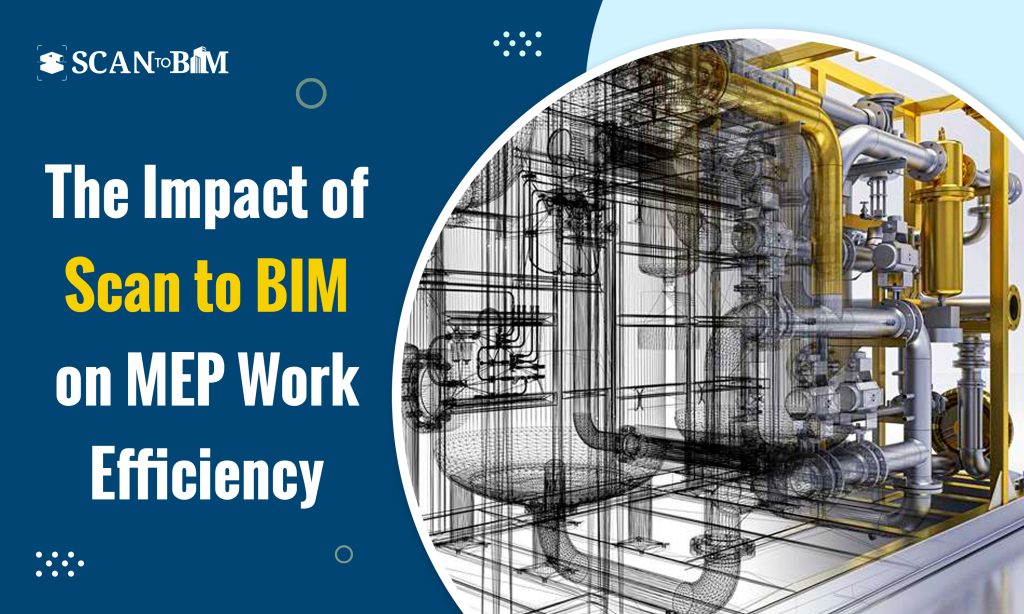
Introduction:
In the rapidly evolving construction and engineering landscape, staying ahead necessitates embracing innovative technologies. Scan to CAD and Scan to BIM Services has emerged as a transformative force, particularly in optimizing MEP (Mechanical, Electrical, and Plumbing) work tracking. The below article will help you understand the Scan to BIM process and its profound impact on enhancing the precision and efficiency of MEP work tracking in construction projects.
Understanding Scan to BIM:
Scan to BIM is the process of associating 3D laser scanning with BIM to create a comprehensive digital illustration of any existing building structures. This process starts with the collection of real-world data by using laser scanning devices. The result of which is a detailed point cloud that captures and depicts the as-built conditions of a building or a structure. This point cloud data is then converted into a 3D model, forming the foundation for accurate and efficient MEP work tracking.
Enhancing MEP Project Monitoring with Scan to BIM Optimization:
1) Accurate As-Built Documentation:
The Scan to BIM process begins with the 3D laser scanning, capturing precise measurements of the existing structure. This accurate point cloud data forms the basis for creating an as-built 3D model. MEP professionals can totally rely on this model for precise as-built documentation, eliminating the need for manual measurements and minimizing the probability of errors while the design and installation phases of the construction lifecycle.
2) Enhanced Clash Detection:
The 3D BIM model generated from the point cloud data allows for the advanced clash detection. By comparing the proposed MEP design with the accurate representation of the existing structure, AEC teams can detect and address clashes quite early i.e., in the design phase itself. This proactive approach minimizes the disruptions caused during the construction, contributing to a more streamlined and efficient process.
3) Streamlined Project Management:
The Scan to BIM process provides a detailed 3D model that serves as a visual representation of the entire project. Utilizing this model, project managers can monitor the real-time progress of the MEP components and its installations. By having a holistic project overview, managers can pinpoint the potential bottlenecks, allocate resources efficiently, and make well-informed decisions to ensure the project stays on schedule.
4) Time and Cost Savings:
The precision offered by Scan to BIM significantly expedites the MEP design process. Accurate as-built documentation and clash detection lead to reduced errors thereby less or almost no reworks, translating into tangible time and cost savings. The technology minimizes the likelihood of on-site conflicts, ultimately contributing to a more cost-effective project.
5) Improved Collaboration:
The Scan to BIM process fosters enhanced collaboration by offering a centralized platform for all stakeholders. This inclusive approach allows architects, engineers, contractors, and facility managers to access and contribute to the 3D model, thereby promoting improved communication and coordination. This collaborative environment ensures that everyone is working from the accurate single sourced data, reducing misunderstandings and enhancing the teamwork.
6) Data-Driven Decision Making:
The Scan to BIM process generates an ample amount of data that empowers the decision-makers. From energy analysis to lifecycle costing, MEP professionals can now make crucial decisions based on detailed and accurate data. This data-driven approach leads to an optimized system performance and long-term operational efficiency.
7) Adaptability to Changes:
Construction projects often undergo changes, and the Scan to BIM technology facilitates easy alterations. When any modifications are required, MEP professionals can quickly update the 3D BIM model to reflect the changes, ensuring that the project remains aligned with evolving requirements. This adaptability contributes to project flexibility and responsiveness.
Conclusion:
Scan to BIM and Scan to CAD Services has emerged as an advanced and crucial technology in the construction industry, revolutionizing the MEP work tracking. From accurate as-built documentation to enhanced clash detection and streamlined project management, the advantages of Scan to BIM are ample and are reshaping the way MEP components are designed, installed, and tracked in the construction projects.
Embracing this innovative process is not just a step forward; it’s a leap into a future where precision, efficiency, and optimization are paramount in MEP work tracking.